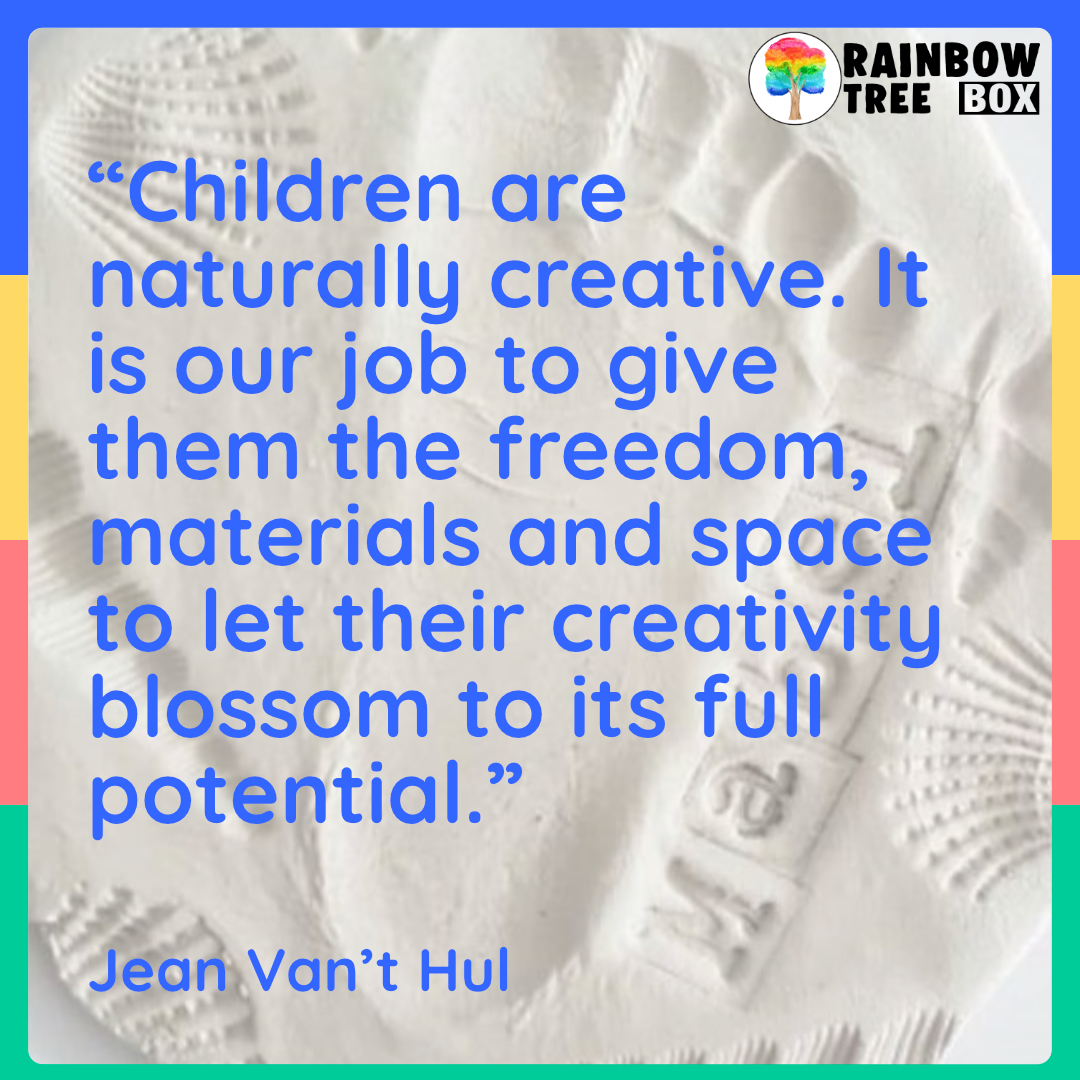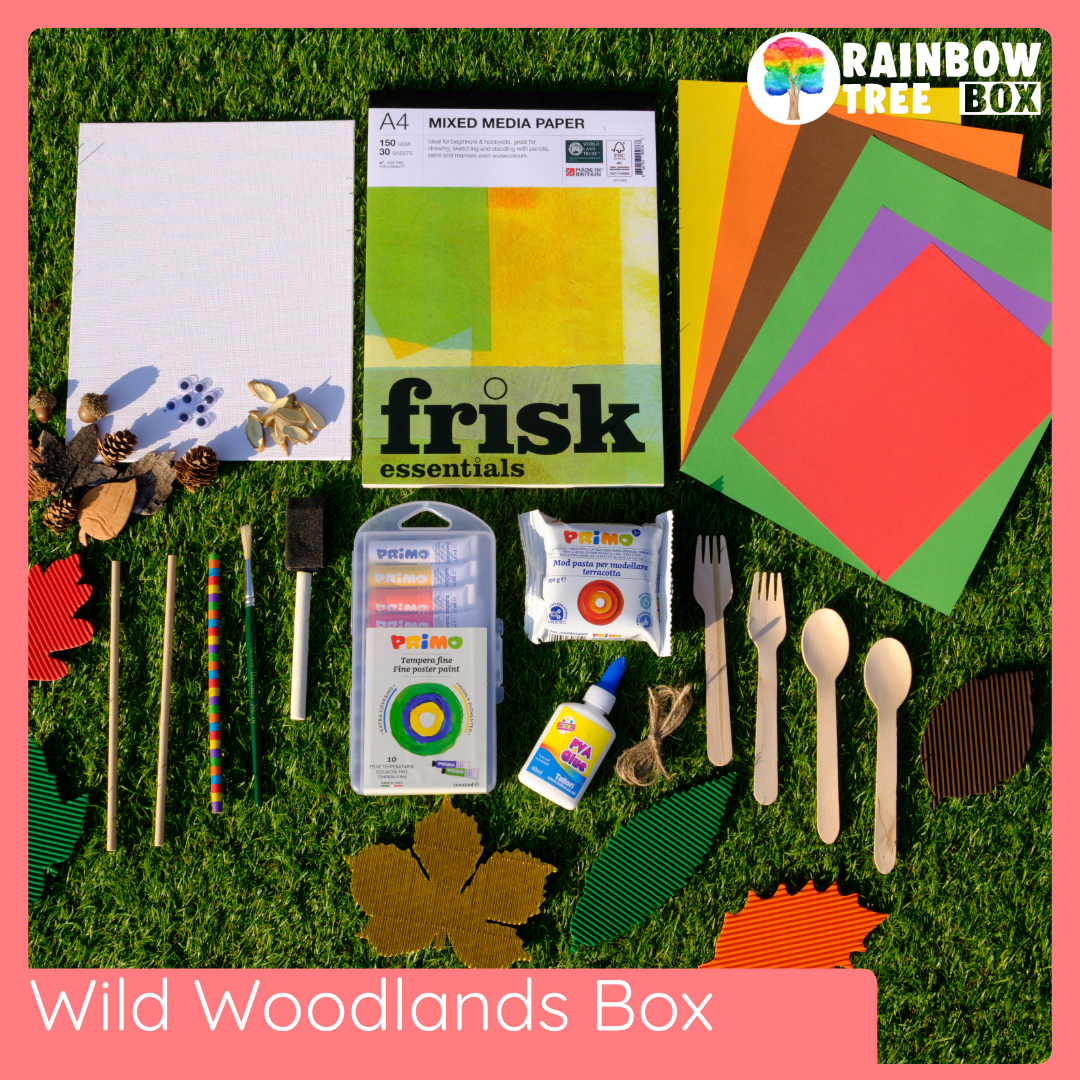What art materials do you have to keep buying?
For us it's paper! C is forever making and decorating paper aeroplanes. He loves to cut flaps and shapes into the paper to see how it affects the way that the planes fly too.
We have a craft drawer in C's room that he can dip in and out of to get any arts & crafts supplies that he needs whenever he is feeling creative. Occasionally I'll dig out a selection of materials (or his latest Rainbow Tree Box) and pop them onto his desk for him to explore and see what he decides to create.

Here's a list of our top ten arts & crafts essentials that we always have in:
1. Paper
We have every colour of the rainbow because different colours come in handy for different projects. For example, in October we use lots of Orange paper for fallen leaves and pumpkin art work. We like to have black paper in for glow in the dark paints, creating night sky art and Halloween crafts.
A good stock of white paper comes in handy for school homework projects and of course white paper provides a blank canvas to add your own colours to.
2. Scissors
Normal children's scissors and a variety of wavy edged scissors too! C loves to cut out the pictures that he creates; The wavy edges provide a nice frame if you ever wanted to back your picture onto a piece of coloured card for an easy picture frame.
3. Glue
PVA glue is good for sticking more 3D things together such as googly eyes onto pinecodes and securing shells into clay.
Glue sticks are less messy and are the easiest to use, especially when sticking card and paper together.
Glue dots are quite strong and are handy to have in if you want mess-free sticking. They are really good at sticking 3D things together too.
4. Tape
Cellotape provides a stong hold when sticking larger objects together such as cardboard tubes onto cardboard boxes.
Sticky back tape is almost as strong as cellotape but you don't have the shiny plastic showing. The tape remails sandwiched between the two things that you are sticking together meaning that you don't see the tape.
Washi tape comes in lots of lovely colours and patterns and can be used in a decorative way to stick things together. It isn't the strongest tape but is really easy for children to use as it tears really easily. We also use it to edge our pictures as a decorative frame.
Masking tape will hold things in place for you whilst you do your art work and can be easily peeled off too, leaving no sticky residue. We use masking tape in our work to reveal a crisp clean space after doing some painting. Its a good way of keeping watercolours and other paints from smudging onto areas of your picture that you want to keep that particular colour away from.
5. Paints
Encourage your children to use a wide variety of different paints. They will be able to explore the different effects that they can create that can come in handy for lots of different types of art projects.
We Love :
- Water colours
- Gouache
- Paint sticks
6. Pastels
Let your child explore pastels and discover how vibrant their art work can look. They are a really fun way of adding colour aswell as letting your child explore textures through touch.
Oil pastels are like a thicker crayon and are really good to smudge and blend together.
Soft pastels are a bit like chalk in their texture and the colours blend together really well.
If your child wants to mix colours and get hands on with some blending, we highly recommend pastels.
7. Felt tips
Ideal for drawing, colouring and outlining pictures. An immediate splash of vibrant colours that your child will love. We recommend making sure that the felt tips that you buy are washable too. Felt tips sometimes soak through paper, especially thinner sheets, so its always a good idea to put some scrap paper, such as a page from an old magazine, behind the paper that your child is drawing on to protect the next sheet of paper or your table top.
8. Pencil Crayons
Perfect for practicing neat colouring in. Colouring with pencil crayons can be quite a relaxing and mindful way of colouring in. They have a small tip that is ideal for adding colour to small spaces too.
9. Stickers
We like to make sure that we have a good supply of stickers in our craft draw. They are a quick and easy way to decorate a craft that your child has made. A fun idea is to ask your child to draw and colour in a background or scene, in which the stickers can be added. For example they could create a woodlands scene with trees and leaves and then add woodland animal stickers into the scene, using stickers. We also use them as a reward sticker to put into Cs school reading record if he has done some excellent reading. Most importantly, children just love stickers!
It's very easy for a craft drawer or box to get cluttered and overly full. This means that they often get ignored as your child simply can't see what art materials they have and don't know what to do with so many bits and bobs! This is a pain point for a lot of parents who have enough clutter to contend with in their homes, with toys, games and party bag tat! We have carefully designed our boxes to include enough arts and crafts materials to use for the projects that are in the box. This also includes ideas & inspiration sheets and video guides so that your child knows where to start and what they can do. The left over and spare materials are useful ones that can be used in a wide variety of arts and crafts projects such as the sketch pad and set of tempura paints included in our Wild Woodlands box.





